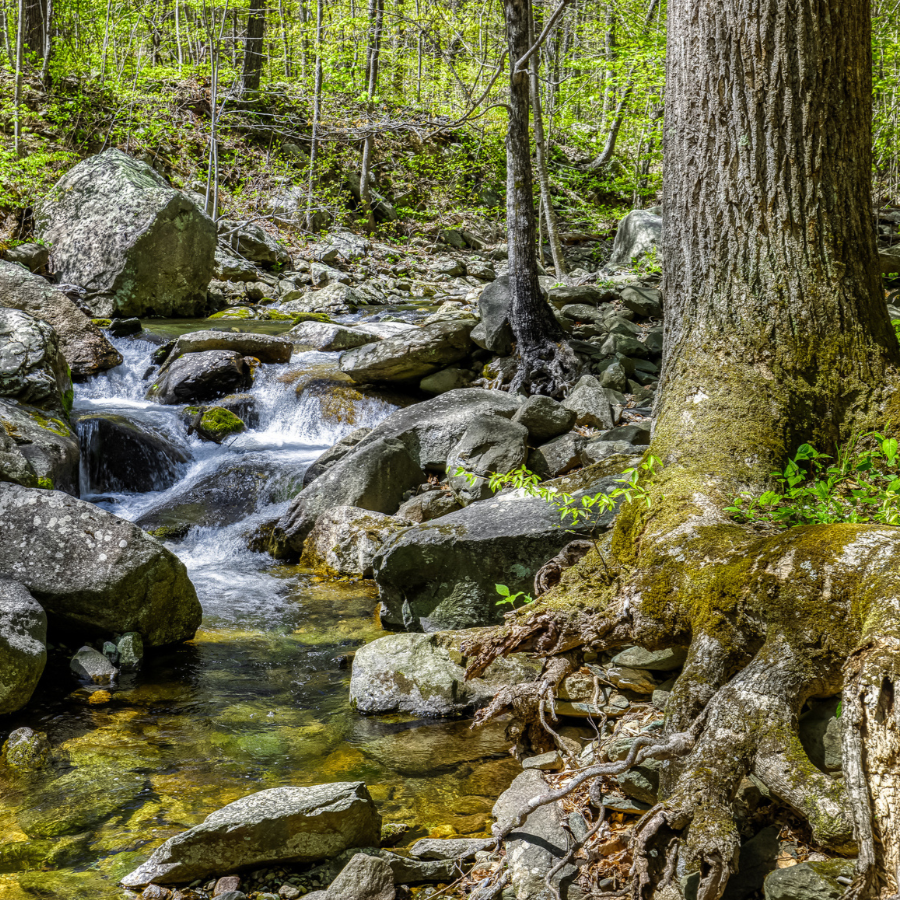This conservation easement is protecting land, cleaning water, and helping these 4 plants thrive
/Clean water isn’t just important for us—plants need it, too!
a potomac conservancy co-held Conservation easement in virginia
Did you know the Potomac River region encompasses four states plus DC? When we talk about protecting the Potomac downstream, it means a lot of work for us upstream. One of the tributary watersheds we’re focused on preserving is Back Creek in West Virginia and Virginia.
Last year, we announced plans to protect our water quality and lush forests by creating a new conservation corridor in the headwaters. We plan to work with groups of local landowners to place conservation easements on their properties, preserving and protecting their land for generations to come. These easements are powerful conservation tools that permanently protect against major threats to the health of the Potomac River, including deforestation and pollution.
Back Creek is home to some amazing views, endangered plants and animals (like the wood turtle), sprawling forests, and clean water. Land conservation is the first step to protecting these Back Creek benefits! Permanently defending land and forests from development makes a huge impact on ensuring a future with clean water. Trees and many plants act as natural filters for water before it flows into our streams and rivers, eventually ending up in your reusable bottle!
Nestled in Back Creek, enjoying its pristine waters and dense forests, are a few plants with some pretty surprising benefits. We toured one of our conservation easements to learn more about these plants and their unique uses.
Violet wood-sorrel
Oxalis violacea
There’s more to this beautiful pinkish-purple flower than meets the eye. Known to grow anywhere from 4 to 8 inches tall, they exhibit "sleep patterns" in which they turn their leaves down at night.
Small doses of violet wood-sorrels have been used to treat skin conditions and digestive issues, and there are records of the plant being used to treat early stages of some cancers. The Oxalis genus name that contains the plant is derived from the Greek work for “sour,” and the violet wood-sorrel lives up to that name: Add it to salads for a bit zesty flavor thanks to the oxalic acid it contains!
Violet wood-sorrel in virginia
Wild Ginger
Asarum canadense
If you enjoy a walk through the woods, you’ve probably walked by many patches of wild ginger. Did you know that Indigenous tribes used it as a spice by drying the root and grinding it into a powder?
It’s a perfect substitute for the ginger you buy at a grocery store, so remember this plant next time you’re cooking up something yummy. It’s also been used to treat wounds and has several antibiotic properties! The plant thrives in wet, shaded soil, making the Back Creek region a perfect place to find it.
wild ginger in virginia
Pawpaw
Asimina triloba
Back Creek locals are more than familiar with the common pawpaw. These small trees begin blooming their unique maroon flowers in April, but don’t stop to smell these ones! Their faint odor of carrion isn’t pleasant for us but is a great help in attracting pollinators. Around late August, fertilized flowers produce the largest edible fruit of any tree in North America.
Pawpaw fruits (technically berries!) have been enjoyed for centuries and were a major component of Indigenous communities' diets. Amazingly enough, it’s also an effective treatment for headlice! And they’re not just good for people: Pawpaws are important for the local ecosystem since they’re the sole host of the Zebra Swallowtail Butterfly. This fall, keep your eyes peeled to forage them around the river!
pawpaw flower in the spring
Spring beauty
Claytonia virginica
Spring beauties are low-growing plants that grow from corms underground, like leeks, and have lovely light pink and white flowers. These common wildflowers are some of the earliest seasonal blooms.
Spring beauty corms contain essential Vitamins A and C. They taste like radishes when eaten raw and like chestnuts when cooked! Their leaves and flowers are edible, too, and make a beautiful garnish or salad greens. The plant has been used medicinally for generations, treating ailments ranging from colds and convulsions to dandruff.
spring beauties in virginia
If you’re lucky enough to find yourself on a hike in the Back Creek watershed, be on the lookout for these incredible plants as you enjoy gorgeous views. Preserving clean water in the Potomac’s headwaters is about so much more than just our drinking water; it’s about safeguarding vital resources for the health and well-being of both people and the environment.
Potomac Conservancy’s efforts align with those of local landowners committed to conservation practices. By working together to create conservation easements, we’re taking crucial steps towards preserving this watershed. These plants offer just a glimpse of the rich biodiversity found in Back Creek. By recognizing the interconnectedness of land conservation and clean water, we can appreciate the importance of protecting the Back Creek watershed as a valuable asset for our community and the environment as a whole.
📨 Get updates on the Back Creek Corridor and how you can help!
Interested in turning your property into a conservation easement? Reach out to our team to learn more at lands@potomac.org.












